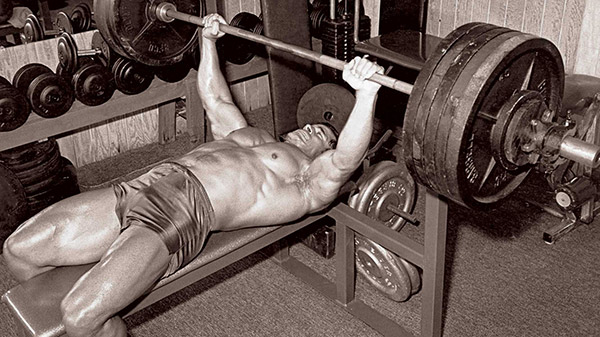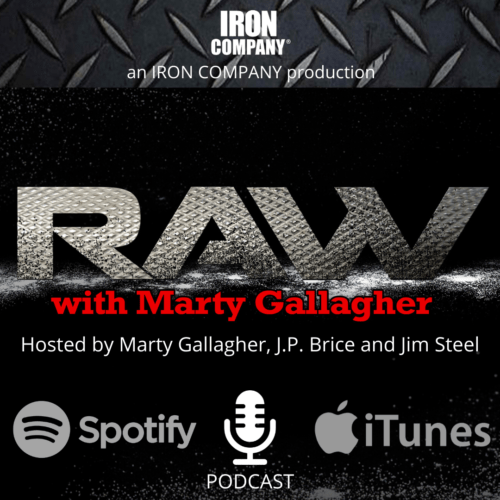
How to dramatically improve your Bench Press
Featured Strength Equipment: bench press, weight bench, barbell, exercise machines, dumbbell, barbell, free weights, decline bench press
The bench press is without doubt the single most popular progressive resistance exercise. Only the biceps curl, and all its variants, could come close to rivalling the bench press in popularity. Why is the bench press so popular? There are many contributing factors but likely the biggest single reason for benching popularity is that bench presses are comfortable. You lie down on a padded weight bench and raise and lower the arms. Now compare this to the horrific squat where you have a barbell draped around your neck as you fight for balance or the equally horrific deadlift where you pull your guts out.
By comparison bench presses are downright comfortable and as close to fun as there is in progressive resistance exercise. Resistance training is, when you think about it, all about struggle and resistance. It is, by comparison, so much more enjoyable to perform resistance exercises sitting down and the only thing better than exercising sitting down is exercising lying down. Unfortunately for 90% of the bench-pressing populace, the results derived are decidedly inferior. Why? We can think of eight common bench press mistakes right off the top of our head. Identifying the flaws illuminates the proper opposite.
Partial reps: walk into any busy commercial gym and observe the bench pressers. The single most common bench press sin is the partial repetition. A proper bench press is lowered all the way down and touches the inflated chest on each and every rep. A proper bench press is locked out fully and completely on every single rep. The seductive lure of partial reps is that when you perform a partial rep the bench presser can handle a lot more poundage. The macho gym lifter intent on impressing the other gym lifters loves partial reps yet from a muscle-building standpoint partial reps are decidedly inferior. Partial reps stress tendons and ligaments far more than pec and front delt muscles. Without a hard lockout there is very little triceps stimulation. Partial reps yield partial results.
Solution: lower the weightlifting bar until it touches the chest, pause or don’t pause, then push to full and compete lockout on every single rep.
Exercise machines are as good as free weights: It would be nice if all results were equal, regardless the training tool selected. In the world of bench-pressing, we have a veritable galaxy of bench press machines and devices. The bench press imitation machine is the Mercedes Benz of exercise machines and can easily cost in excess of $3,000. Machine makers would have you believe that bench pressing on a machine is just as productive as dumbbell or barbell bench pressing – and that is a myth. The very thing that makes exercise machines fun to use, their ball-bearing smoothness and frozen motor pathway (plus that plush padded seat!) dilutes results: for muscle building purposes you do not want to make progressive resistance training easier. With a bench press machine or device, all you do is push or pull. With free-weights you have to control and contain side-to-side movement; free-weights stimulate muscle stabilizers in a way that machines cannot.
Solution: free-weight bench pressing is the meat and potatoes; machine benching is desert. Always eat the entre first and if you still have room, eat desert.
Ignoring the negative: really good bench pressers stress the negative portion of the bench rep; really bad bench pressers ignore the negative portion of the bench press rep. If you were to observe a world-record level bench presser working out, you would notice how controlled, deliberate, careful and precise they treat the negative. Really good benchers lower slowly and explode the push phase; really bad benchers lower quickly and struggle and contort on the push phase. The pros know that by lowering with tremendous muscle tension, tremendous muscular benefit is accumulated: lats and triceps are heavily activated; these are the “braking muscles.” Great bench pressers have great lats and triceps because these muscles resist the negative. PULL the bar down, exert resisting tension – don’t just relax your muscles allowing gravity to do the work. Don’t throw away the muscle-building attributes associated with a proper bench press negative.
Solution: as the barbell, dumbbells or machine handles are being lowered, exert tension; pull the weight down, the closer to the chest, the slower the bar speed.
Obvious technical flaws: do not flare the elbows, raise the butt off the bench or bounce reps off the chest. The purposeful flaring of the elbows while barbell bench pressing dates back to the 1960s. Theoretically flared elbows isolate the pecs to a greater degree. The problem is that this technique compromises poundage to an unacceptable degree. Drastically reduced poundage diminishes the muscle-building benefits. Benchers will lift their butt off the bench in order to turn a flat bench into the easier decline bench press. The butt has to stay on the bench at all times – no exceptions. Many bench pressers have become experts at bouncing the barbell off their chest on each rep. The bounce creates momentum and makes the bench press way easier. Way easier is bad for building chest and arm muscles. One favorite trick is to combine partial reps with a bounce and a butt raise. This is bench press malpractice.
Solution: don’t flare the elbows, don’t lift your butt off the bench and don’t bounce reps off your chest.
Touch-and-go all the time: 90% of all bench pressers use the “touch-and-go” bench press technique exclusively. The T-and-G bench is yet another technique designed to make bench-pressing easier. The polar opposite of touch-and-go is pausing on the chest. Most bench pressers avoid pausing because of how dramatically it affects poundage-handling ability. Pausing bench reps makes the push off the chest maximally difficult, which is precisely what we want for maximum chest building. Do not use ridiculously long pauses: pause just for an instant. Lower with precision and control, pause for the briefest instants on the maximally expanded chest before exploding the bar upward.
Solution: learn how to pause bench. No need for long pauses; long pauses destroy poundage-handling ability. Lower with control, briefly pause then explode!
Avoidance of dumbbell benching: A strong case could be made that proper dumbbell bench pressing is the most effective and result producing of all bench press types. Dumbbell-benching forces each arm to carry its fair share. Dumbbells allow the bench presser to lower further, increasing the “pre-stretch.” A deep stretch increases the muscle-building effectiveness. Dumbbells free the arms and wrists to rotate as they push and lower; the barbell locks the hands and wrists into a fixed position. All the techniques outlined for barbell benching apply to dumbbell bench pressing. For someone that has been using barbells or machines exclusively, a dose of dumbbell bench pressing will most certainly break you through to the next level of chest development.
Solution: lower bells all the way to the chest, feel the stretch, pause, push to full lockout. Six weeks of dumbbell benching will blow up pecs, delts and triceps.
Sticking with the same bench routine too long: don’t turn a favored bench press routine into a religion. Bodybuilders are creatures of habit and when they find a particular routine, one that generates results, they tend to stick with it long after the results have dried up. This is not to say that at some point in the future this same routine will, once again, be effective. However, the human body, given time will neutralize the positive effects of the most sophisticated of training routines. Nowhere is this more true in bench pressing. Bodybuilders will use a favored bench routine for years! Why? Because they like it! It is comfortable, fun, familiar and they are pretty good at it. The body needs to be shocked out of its complacency, challenged, thrown off balance and stressed. On average, a bench press training routine should be changed every 6-8 weeks.
Solution: develop a collection of bench press routines that can be periodically rotated. Make sure the new routine differs significantly from the current stale one.
No bench press preplanning: One sure fire way for a serious bodybuilder to “bring up” his pecs, front delts and triceps to a significant degree is to get a significantly bigger bench press. Breakthroughs in strength and power always result in breakthroughs in muscle size. Want bigger muscles? Get way stronger! It really is that simple. Competitive bench pressers increase their bench press by having a periodized game plan. The competitive powerlifter sets a realistic bench goal into a timeframe and generates a week-by-week plan of attack. Most bodybuilders don’t have any pre-planned ideas about their bench press workout, they just show up at the gym and bench the way they like, doing what seems appropriate for that day. Small weekly poundage increases yield huge results over a protracted period of time; a typical bench press periodization game plan is 8-12 weeks in length.
Solution: think like a lifter. Set a realistic goal into a timeframe. Establish weekly mini-goals. A way bigger bench equates to way bigger muscles.
About the Author
As an athlete Marty Gallagher is a national and world champion in Olympic lifting and powerlifting. He was a world champion team coach in 1991 and coached Black's Gym to five national team titles. He's also coached some of the strongest men on the planet including Kirk Karwoski when he completed his world record 1,003 lb. squat. Today he teaches the US Secret Service and Tier 1 Spec Ops on how to maximize their strength in minimal time. As a writer since 1978 he’s written for Powerlifting USA, Milo, Flex Magazine, Muscle & Fitness, Prime Fitness, Washington Post, Dragon Door and now IRON COMPANY. He’s also the author of numerous books including Purposeful Primitive, Strong Medicine, Ed Coan’s book “Coan, The Man, the Myth, the Method" and numerous others. Read the Marty Gallagher biography here.



